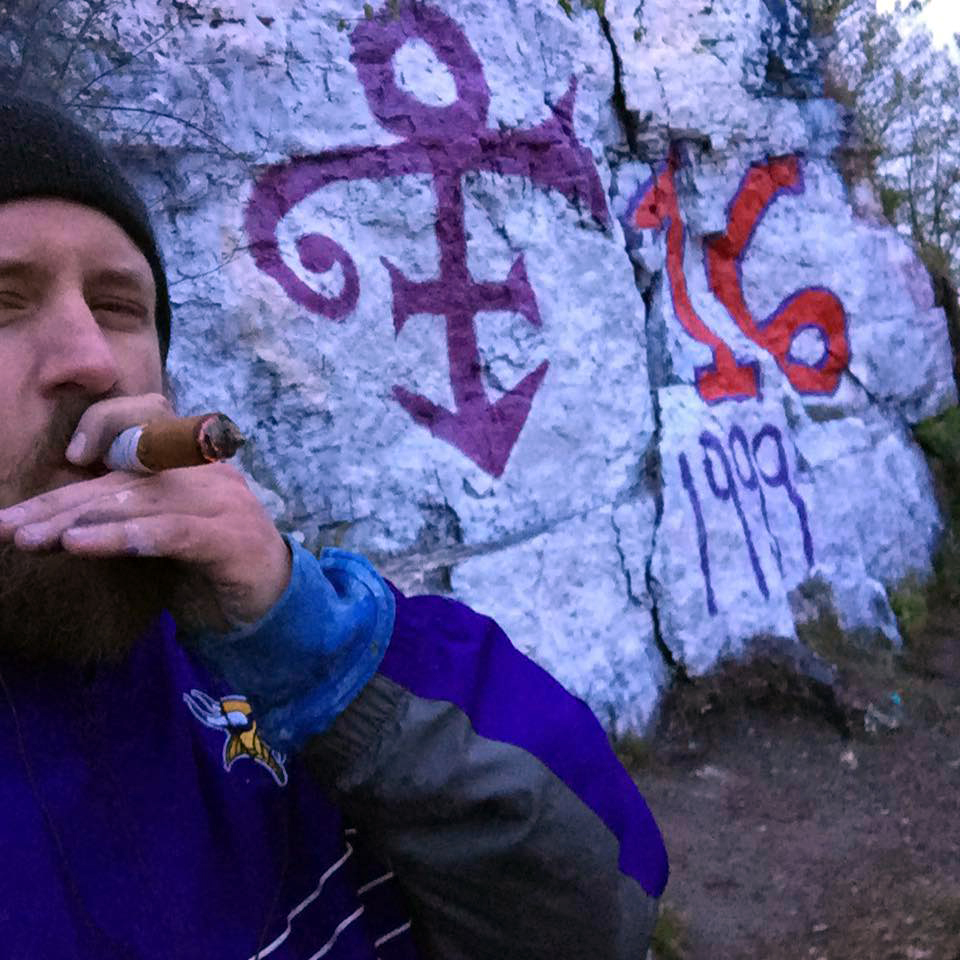
It appears Red Wing’s Barn Bluff may no longer be the town’s billboard.
Graffiti on Barn Bluff’s rock face is a tradition and sometimes it can be touching, as when Prince’s symbol appeared on the Minnesota river town’s bluff not long after he was found dead in 2016. The city painted over it, and another Prince tribute was painted over that almost immediately.
Technically, painting on the bluff is banned but it’s seldom uniformly enforced. If the city gets a complaint, the graffiti is painted over.
That might change, the Rochester Post-Bulletin says. The City Council is considering a referendum to ask residents whether an all-out ban should be enacted.
Resident Joe Gibart, who repainted the Prince tribute, called “shenanigans” on the proposal.
Alright folks, in case you haven’t heard, the city is up to their shenanigans again talking about what to do with the…
Posted by Joe Gibart on Friday, January 26, 2018
City Planning Director Bryan Peterson tells the Post Bulletin there are good reasons to ban painting on the bluff.
The bluff is public property, and the city -—particularly the police — are concerned that the current policy means uneven enforcement of the city’s graffiti laws for public places. The bluff, a historic landmark on the National Register of Historic Places, is considered sacred to the Dakota people. Additionally, there are people who, per the master plan for the bluff, want it left in its natural state.
Finally, Peterson said, there are issues concerning safety of both the graffiti artists and the city employees sent to cover offensive art, the city’s liability if it allows the graffiti to continue, and the time involved sending public works employees to paint over the graffiti.
“If we make an ordinance that says no painting, how do you stop it?” asked Council Member Dan Munson. “How do you enforce it?” He added that, according to the city’s own survey, 51 percent of residents voted not to ban the painting completely.
Peterson said there are two schools of thought for enforcing a ban. One would be to create a space for a new tradition of expression for residents. The other idea is to fight paint with paint until you win. “When you see (graffiti), you’ve got to remove it immediately,” he said. “If you keep at that, the idea is it reduces and eliminates itself.”
The city has wrestled with the issue for years but it didn’t rise to outrage level until the Prince tribute was covered up.
“I feel that the bluff has been a tradition in this town longer than I’ve been alive and longer than most everyone here has been alive,” Gibart told the council in a meeting in April 2016. “I don’t think the city or anyone else should have any involvement in painting over it; it’s always been self-regulatory.”
